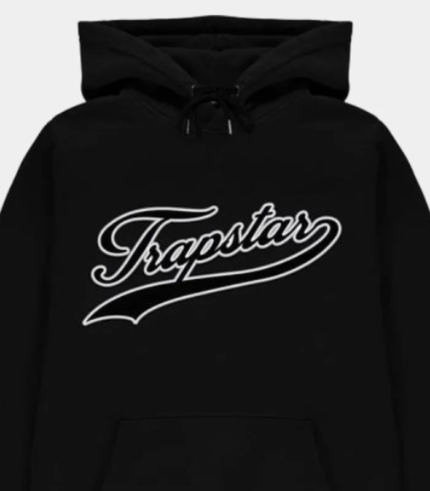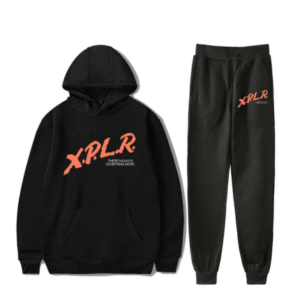
Streetwear has evolved from a niche subculture into a global phenomenon, and few brands represent this transformation better than UK Trapstar . Founded in the heart of London, Trapstar has become more than just a clothing line—it is a cultural movement that bridges music, art, and fashion. With its bold aesthetics, underground appeal, and celebrity endorsements, Trapstar has carved its place as one of the most influential British streetwear brands. This article explores Trapstar’s journey, its role in shaping urban fashion, and its lasting influence on British and global style.
Origins: From Underground to Mainstream
Trapstar was founded in 2005 by three friends—Miké, Lee, and Will—who shared a passion for fashion, music, and London’s underground culture. What started as a side project, with T-shirts printed in small batches and sold directly to friends, quickly became a symbol of exclusivity and authenticity.
In its earliest days, Uk Trapstar relied on a “secretive” distribution strategy. Pieces weren’t available in big stores but were sold through word-of-mouth, pop-up sales, and personalized deliveries packaged in pizza boxes. This approach gave the brand a mysterious aura, creating demand within London’s youth communities and music circles. Wearing Trapstar wasn’t just about clothing—it was a statement of belonging to an exclusive underground movement.
Defining Aesthetic: Bold, Rebellious, and Iconic
Trapstar’s designs are instantly recognizable for their dark, edgy, and rebellious aesthetic. The brand incorporates gothic typography, graphic prints, and military-inspired pieces that mirror London’s raw street culture. Its motto, “It’s a Secret,” perfectly captured the brand’s underground ethos.
Signature items like oversized hoodies, camouflage jackets, and bold logo tees resonated with young Londoners who wanted to stand out while embracing authenticity. Trapstar redefined what it meant to wear streetwear—it was not just fashion but also an expression of attitude, resistance, and identity.
The Music Connection: Hip-Hop, Grime, and Celebrity Endorsement
One of the key reasons behind Trapstar’s rapid rise was its deep connection with music. During the mid-2000s, London’s grime scene was exploding, with artists like Dizzee Rascal, Wiley, and Skepta shaping a new era of UK music. Trapstar became the unofficial uniform of this movement.
As the brand grew, international stars also embraced it. Rihanna, Jay-Z, A$AP Rocky, and Kanye West were spotted wearing Trapstar, pushing it from a London cult label UK Trapstar a global fashion player. In particular, Jay-Z played a pivotal role by endorsing Trapstar and eventually partnering with the brand through Roc Nation. This co-sign elevated Trapstar’s credibility and positioned it alongside American streetwear giants.
By blending fashion with music, Trapstar blurred the lines between the two worlds. For fans, wearing Trapstar meant more than just looking stylish—it was about connecting with the energy and identity of the culture they admired.
Trapstar and British Urban Identity
Unlike American streetwear brands that often reflected skate culture or hip-hop, Trapstar’s roots were uniquely British. It embodied London’s multiculturalism, where Caribbean, African, and Asian influences blended with UK rap, grime, and drill. Trapstar became a voice for underrepresented communities who rarely saw themselves reflected in mainstream British fashion.
The brand also played into the concept of aspiration and rebellion. For many young people in London, Trapstar symbolized both resistance against the system and the ambition to rise above circumstances. Its military-inspired looks echoed themes of survival and power, while its exclusivity signaled prestige and success.
Global Expansion and Mainstream Recognition
In 2016, Trapstar’s partnership with Jay-Z’s Roc Nation officially pushed the brand into the global spotlight. Collaborations with Puma, Nike, and even luxury brands marked Trapstar’s transition from underground label to international streetwear heavyweight.
Despite mainstream success, Trapstar managed to maintain its authenticity. Its founders continued to emphasize the underground roots of the brand, ensuring it never lost touch with the communities that built its identity. This balance between exclusivity and expansion has been central to Trapstar’s longevity.
Collaborations and Cultural Impact
Trapstar’s collaborations helped cement its place in fashion history. Limited-edition drops with Puma, 24karats Japan, and Footpatrol not only showcased Trapstar’s versatility but also elevated its global status. These collaborations merged streetwear with sportswear and luxury aesthetics, proving Trapstar’s ability to adapt while staying true to its rebellious DNA.
Beyond clothing, Trapstar influenced culture by becoming a visual representation of British urban life. Music videos, concerts, and even football stadiums featured fans proudly wearing Trapstar gear. In doing so, the brand bridged the gap between subculture and mainstream, making British streetwear a global talking point.
Read More: Business


